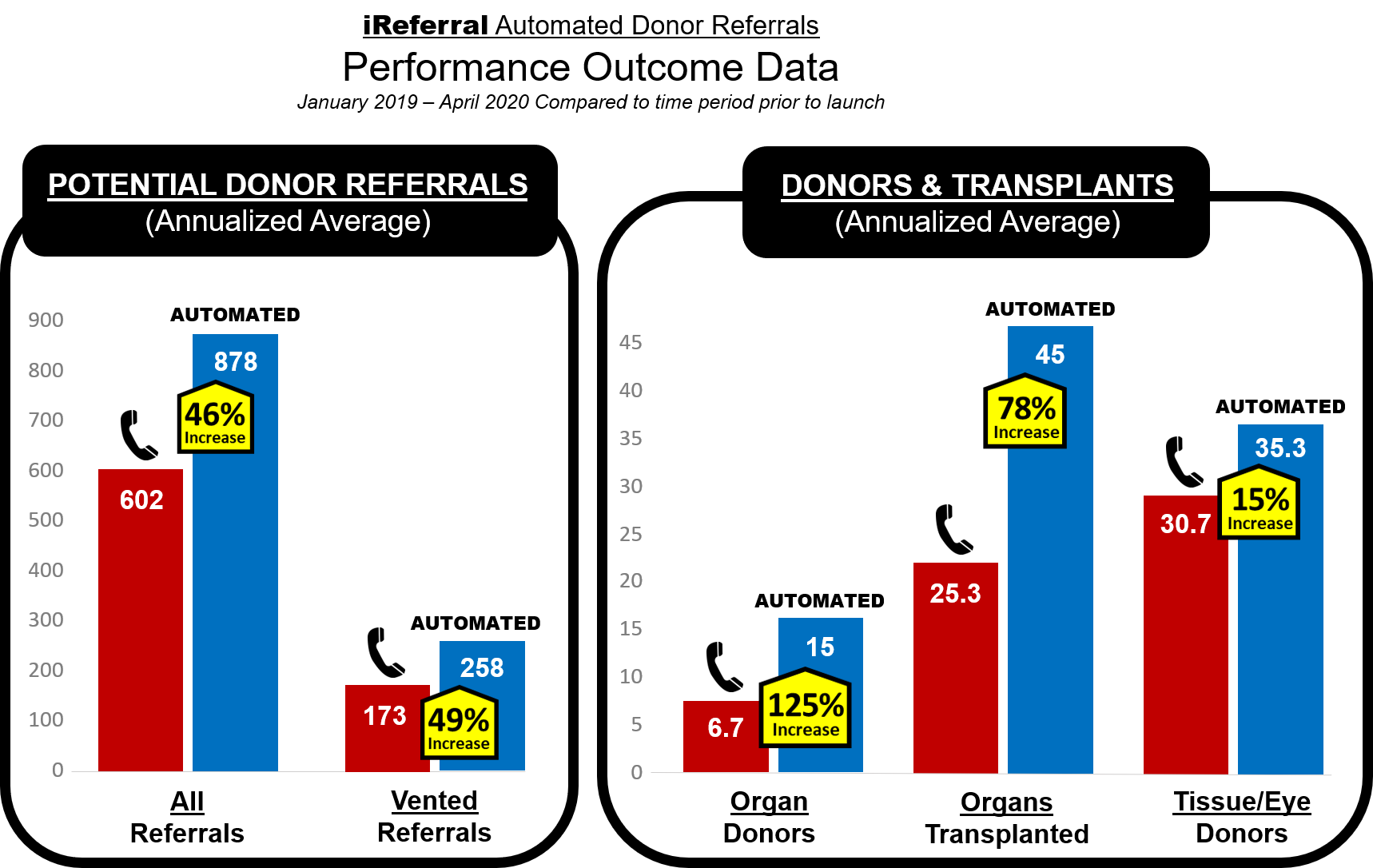Automated Electronic Donor Referrals Have Increased Transplantation
Transplant Connect, Santa Monica, CA
Meeting: 2021 American Transplant Congress
Abstract number: 201
Keywords: Donation, Efficacy, Procurement, Resource utilization
Topic: Administrative » Quality Assurance Process Improvement & Regulatory Issues
Session Information
Session Name: Quality Assurance and Regulatory Issues
Session Type: Rapid Fire Oral Abstract
Date: Monday, June 7, 2021
Session Time: 4:30pm-5:30pm
 Presentation Time: 4:30pm-4:35pm
Presentation Time: 4:30pm-4:35pm
Location: Virtual
*Purpose: It is well understood and supported by previous studies that costly inefficiencies exist in the current phone-based process by which hospitals refer potential donors to Organ Procurement Organizations (OPOs). Such costs include delays in notification as well as failures to refer altogether, preventing the donation and transplantation of life-saving organs. To address these challenges, a secure, automated and highly-replicable electronic donor identification and referral interface, known as iReferral, was developed and implemented to 1) automate the identification of potential donors by algorithmic referral triggers and 2) automate the hospital-to-OPO referral delivery, thereby eliminating the manual initial referral phone call and liberating hospital nursing resources.
*Methods: The multi-disciplinary team collaborated to 1) design algorithmic referral triggers within the Hospital EMR and 2) develop a secure technical interface directly connecting the OPO and Hospital software systems. The referral triggers automatically identify potential donors and deliver electronic referrals from the Hospital EMR to the OPO software system based on hospital staff entry of pre-determined clinical data, alleviating nursing resources and eliminating the risk of missed referrals. The interface also includes a manual referral trigger for cases such as early family mention of donation. Upon receipt of the electronic referral, the OPO is able to retrieve critical donation screening details without disrupting the hospital staff. The first known interface of its kind, the pilot launched in October 2018 and has served as a model for many hospital networks and OPOs that have since implemented this replicable automated referral technology, known as iReferral.
*Results: The interface led to significant increases in referrals, donations, and organ transplants at the pilot hospital (see figure). There are several case studies of the pilot OPO receiving an automatically triggered donor referral well before the nurse could call, allowing the OPO to mobilize and ultimately recover organs which likely would have otherwise timed out. Automated referrals have been met with near universal enthusiasm from clinical staff.
*Conclusions: Continuing successful results have been achieved as a result of 1) defined algorithmic triggers for identifying potential donors and 2) the automated delivery of referrals via the secure Hospital-OPO interface. This project has eliminated costly inefficiencies and reduced burdens on both Hospitals and OPOs and has led to significant increases in the number and timeliness of referrals, directly resulting in increases in donation and transplantation.
To cite this abstract in AMA style:
Piano J. Automated Electronic Donor Referrals Have Increased Transplantation [abstract]. Am J Transplant. 2021; 21 (suppl 3). https://atcmeetingabstracts.com/abstract/automated-electronic-donor-referrals-have-increased-transplantation/. Accessed December 23, 2025.« Back to 2021 American Transplant Congress

